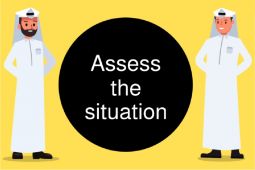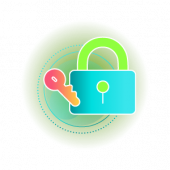How do i I deal with unpleasant messages or comments I get online?
Digital Social Exclusion in My Online Classroom

Why is it important for my student to have a sense of belonging in an online environment?
Providing students with a sense of belonging is becoming increasingly critical for schools as well as for the rest of society. School motivation cannot be understood apart from the social fabric in which it is imbedded. A student’s sense of belonging in the school or classroom is defined and dependent upon how they are personally accepted, respected, and supported by their peers, teachers, and others. Therefore, in order to improve the academic performance of all students, a school where students have a strong sense of belonging must exist.
Sense of belonging is defined by the extent to which a student feels personally accepted, respected, included, and supported by others, especially teachers and other adults in the school social environment and now digitally.
An understanding of belonging is important for educators. It allows you to plan effective practices to support students in the classroom and school-wide.
According to the Australian Council for Educational Research (ACER) , when students feel they’re part of a school community or a classroom, they will actively engage in academic and non-academic activities. Research shows that students who report a high sense of belonging in school generally put in more effort and are more motivated. Improving feelings of belonging in school can support both student engagement and achievement.
On the other hand, a low sense of belonging is associated with negative, possibly antisocial or delinquent, behaviours. These could include misbehaviour, drug and alcohol use at school, violence and dropping out of school.
Therefore, as an educator, how do I know if my students are being excluded in the online educational environment such as online classes or other forums?
People who are excluded by others online, such as on Facebook or other online platforms, may feel just as bad as if they had been excluded in person. Most people would probably expect that being ignored or rejected via a remote source like the Internet would not hurt as much as being rejected in person. Yet, people may experience similar psychological reactions to online exclusion as they do with face-to-face exclusion.
There are many signs you can monitor that show digital exclusion is happening in your class:
- Your student does not communicate at all during classes even in minor communication
- Your student always tries to log out from class and create alibies
- Your student does not engage in other activities outside the online classroom
- Your student remains in the same online workgroup and refuses to changes groups, or join other students
- Your student doesn’t deliver homework as requested
- Your student does not identify himself as part of the class or school
- Your student refuses to speak or share with other students.
- Your student does not approve or engage at all in agreements done by other students
- Your student’s academic performance and their routine behaviour changes suddenly
These signs must be monitored in a group or in an individual way since their meaning could change depending on the context of each student, so you as an educator, you should always investigate when you see these kinds of signs.
To prevent my students from feeling isolated and rejected after noticing the signs what can I do about it? How can I ensure that you’re my students are all included in an online environment?
- Introduce yourself. Write a personal note about what your class is going to be like this year. Personalize your course syllabus. Get to know your students’ names and memorize them as soon as possible, and before your first lesson. If you have the access, try your best to get their pictures. and also memorize them.
- Build open, meaningful communications between you and the students, so that they gain a sense of connection with you as a person not only as an educator. Students need to feel that they relate, as real people, to those with whom they interact online to develop feelings of trust, being valued, and mattering.
- Use online ice-breaker activities, to encourage students to meet and interact in the virtual environment.
- Encourage group work: Make communication and collaboration between students' part of the assessment, such as group assignments and peer assessments.
- Prioritize high-quality teacher-student relationships: Schedule office hours or one-on-one meeting times. Make sure to get to know your students, and to give them space to discuss their needs and individual questions.
- Provide an online “student lounge” or encourage students to use Skype, Facebook or other networking sites to interact beyond the formal course
- Communicate regularly with students through announcements; Engage in discussion forums with students.
- Promote respect for ethnic diversity, be intolerant of discrimination
- Encourage parents’ involvement in the school to build social connections between home and school
- Create a culture of acceptance among students
- Offer emotional support to students and be sensitive to students’ needs and emotions, understand their point of view and show interest
- Talk openly about the meaning of digital social exclusion, also make sure that they understand it is real
These are some techniques that you can use to create a positive and supportive online environment, It should also be noted that implementing it completely is not easy, but you can start step by step, and you will see the difference in interactions from your students.
Moving on to the next step, what should I do to my help my students that are being socially excluded by other students online?
You can take many steps to interfere when any student faces exclusion::
- Investigate the issue before making any judgement or personal analysis.
- Address immediately any bullying issues or other similar issue happening in the online class if any with other students and parents, since digital social exclusion is part of cyberbullying.
- Coach the student by helping your excluded students to improve their conflict resolution skills. Offer guidance about the situations they might encounter and provide pointers on how to deal with them.
- Arrange opportunities between classmates to engage them all based on a common interest to strengthen their bond and sense of belonging to the class, to feel accepted and have common grounds to work with.
- Encourage students to send positive feedback about each other in each class, how we should include and support each other.
- Talk to the parents of all students as a group to monitor their children behaviour and empower them to encourage inclusivity in class also to help you monitor any negative behaviour on social media and inside the online classroom.
A sense of belonging is important to many students, though not all. For some, online learning presents an opportunity to avoid social contact in learning and this choice is to be respected.
The key is to design a learning environment with multiple layers for engagement and participation where learners can choose their level of interaction with others.
@2x.png)






















